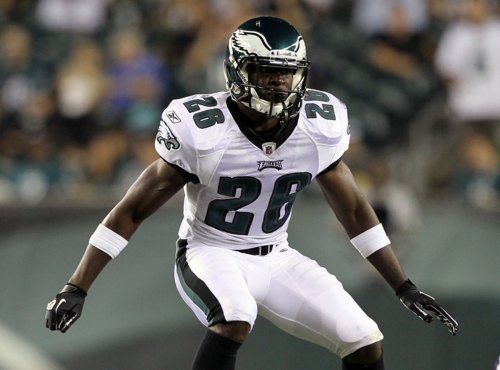
The regular season is bearing down, but why should that stop us from discussing the NFL draft once again? Recently, Eagles GM Howie Roseman gave an interesting answer regarding his personnel strategy in an interview with Reuben Frank:
“I got a note on my desk that says, ‘Big schools, consistent performers,’ and when you look at the league and successful guys in the league, that’s a pretty good formula for success, so we’ll try that and it doesn’t mean we won’t go off that, but it’s something we look at as we go through the process.”
Ever since Roseman took over from Tom Heckert, we’ve attempted to determine the differences in strategy and player personnel decisions that he brought to the job. Certainly we noticed the shift toward players who were leaders at big name schools. We haven’t seen much risk on character issues or small college stars. But we also hadn’t heard such a public declaration either. So I went back and looked at the players Roseman has drafted in the last two years. Here’s what he’s done:

You can easily see the focus Roseman describes, especially in terms of big schools vs. small schools.
During the majority of Heckert’s reign from 2004 to 2008, the Eagles drafted players from non-BCS conferences 36 percent of the time (17 of 47). In fact, almost half the players he selected in his first two seasons were from these schools. Since Roseman moved to Vice President of Player Personnel, however, the trend reversed. Since 2008, they’ve only drafted those players 9 percent of the time (3 of 32).
In the last two years shown above, Roseman took three: Clay Harbor, Curtis Marsh, and Jaiquawn Jarrett. That percentage, just since he became GM, is exactly half the average of the rest of the NFL. In 2010 and 2011, NFL teams took one quarter of their players from non-BCS colleges.
“Consistent performer” also seems to have come through. Over the last two years, the Eagles have selected players with an average starting experience in college of 31.5 games. Until I get an intern to help me out with the number crunching, I won’t be able to compare this to all other teams. Still, it’s high. Somehow I don’t think Jason Pierre-Paul was ever high in the Eagles draft board. The average player the Eagles picked started about two and a half full seasons of college football.
And that figure actually underestimates the focus on consistency. A number of the players on the low end of the spectrum have an excuse for their fewer starts. Greg Lloyd was hurt his senior season, Dion Lewis left school after two years, Curtis Marsh started all 16 games at corner only after he was moved from running back in his junior season, and Danny Watkins started every game after transferring to Baylor.
Overall, the trend is clear. That doesn’t automatically make it a better strategy. It only means that your busts will be of the Daniel Te’o-Nesheim, rather than Bryan Smith, variety. But that in and of itself will be interesting to watch going forward.
Photo from Getty.